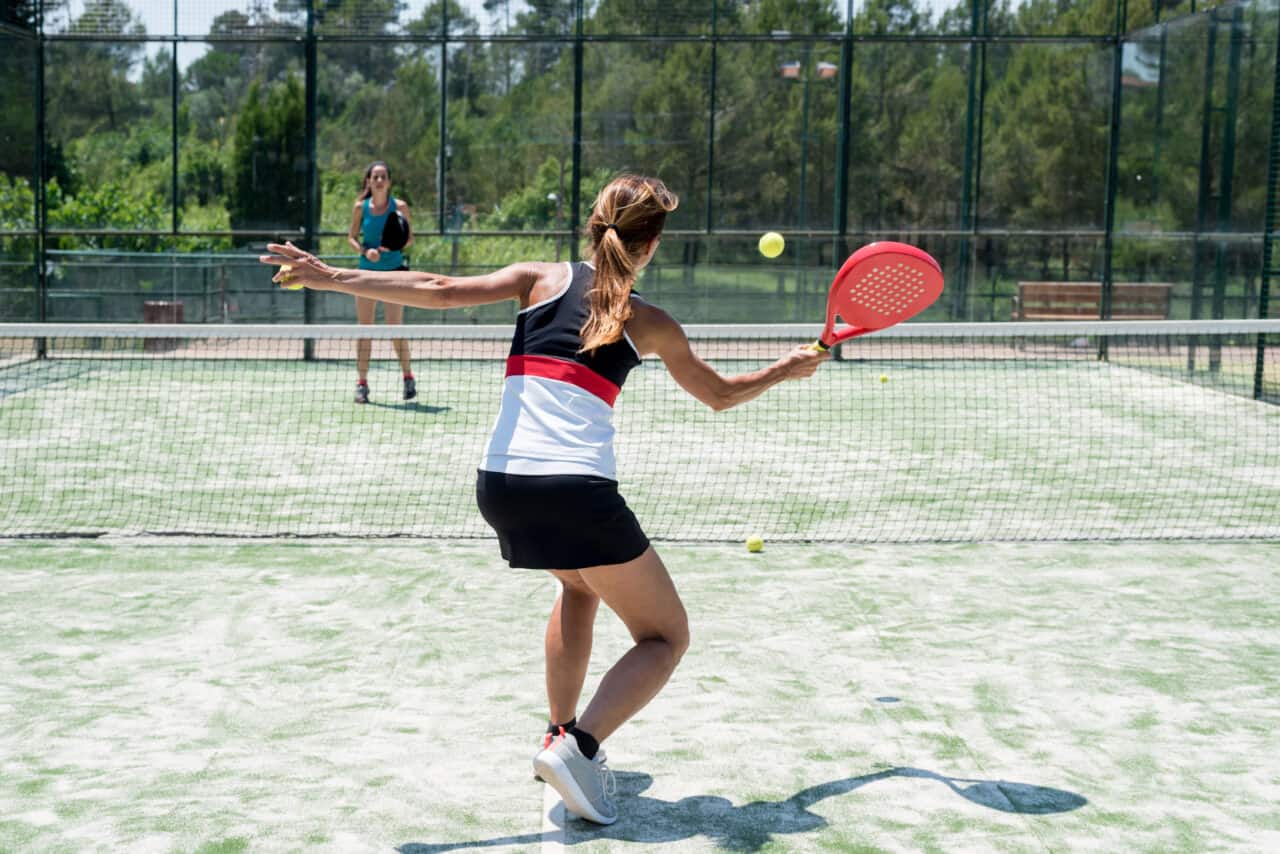
What is Padel? An Introduction to the exciting racket sport
In the world of sports, there’s always a new trend popping up, catching the attention of sports enthusiasts all around the globe. One such trend is Padel – a thrilling racket sport that’s gaining popularity at a lightning pace, even in Germany. Let’s delve into what makes Padel so unique, the rules that govern it, and where you can dive into this trendy sport yourself.
So, what exactly is Padel?
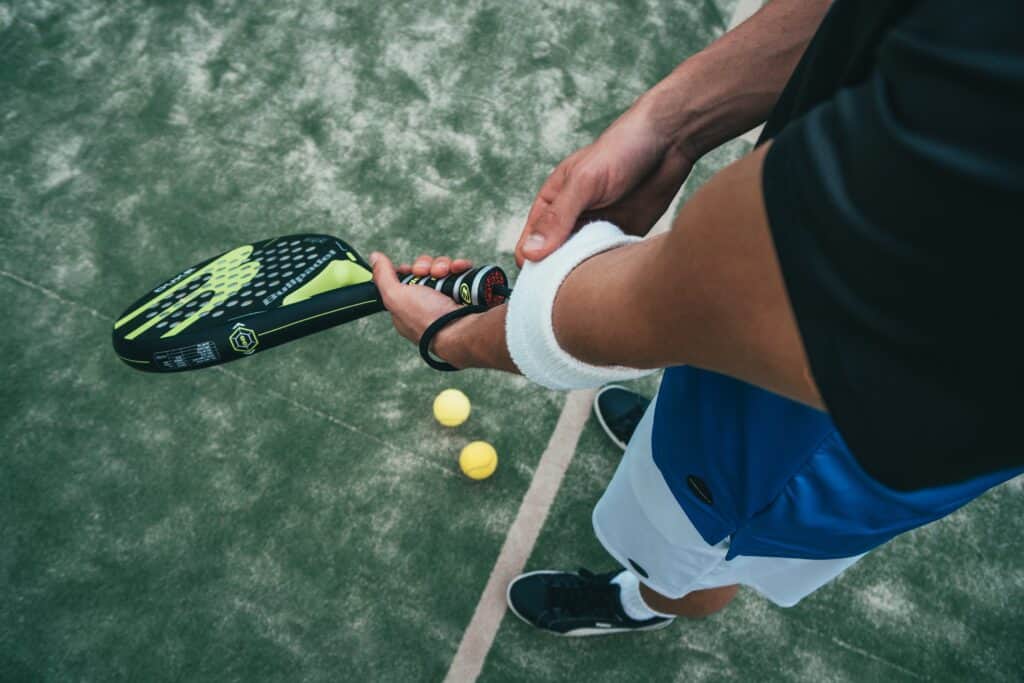
Padel Tennis, often just called Padel, is a racket sport that emerged in Mexico during the 1960s and later spread like wildfire to Spain and beyond. Picture it as a blend of tennis and squash, cherry-picking the best bits from both games. On a specially designed court surrounded by glass and metal walls, Padel takes on a distinctive vibe. While its rules and equipment might resemble tennis, there are cool aspects that set Padel apart and make it a real blast.
What gear do I need for my first Padel game?
Before you hit the court, it’s all about getting the right gear for a Padel match. Most places have equipment available for rent, so you won’t need to worry about much. Grab three of your buddies, pick up Padel rackets and balls from the local Padel club, and you’re set to roll. If you’re curious about the basics, we’ve got the lowdown right here.
Uniqueness of Padel Tennis: The Padel Court
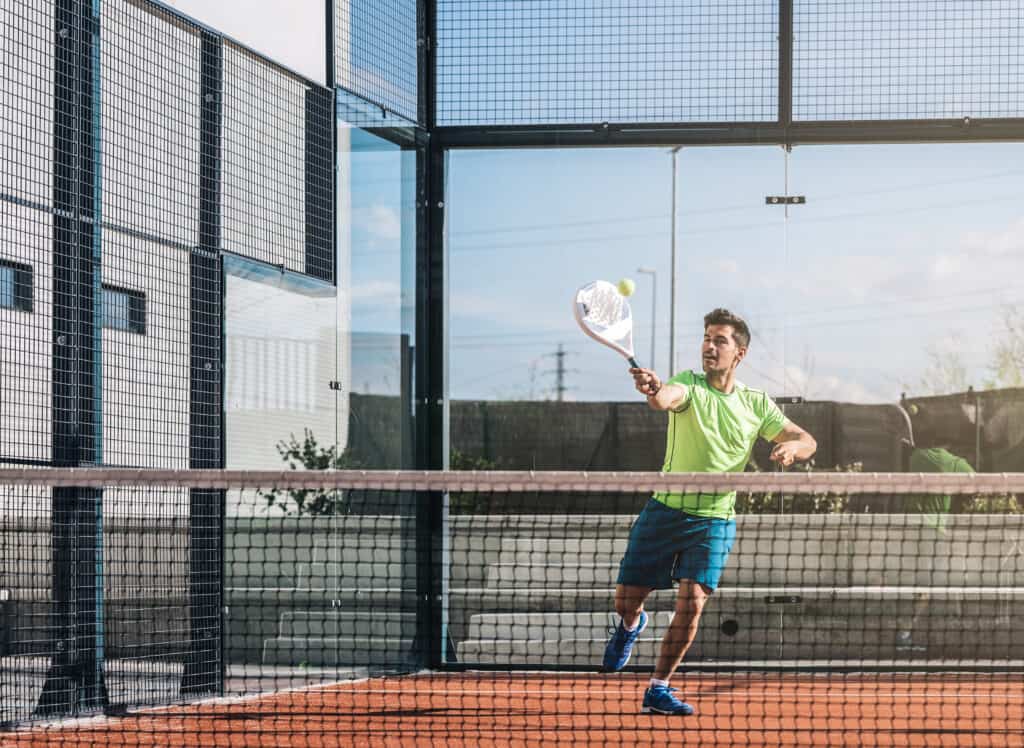
Think of a Padel court as a tailor-made playground for this sport, smaller than a typical tennis court. It stretches around 20 meters in length and 10 meters in width on average. The standout features? Glass walls surrounding the court, towering at about three meters, keeping the ball within play, and a metal grid right above those glass walls, ensuring the ball stays where it should. The net’s a tad lower than in tennis, hanging at around 88 to 92 centimeters. Split into service boxes, these court sections are about five meters long and three meters wide on average. Here’s the cool part: you can use the walls to your advantage, as the ball can bounce off them, opening up tactical opportunities. Padel courts usually come equipped with lights, making sure you can play even when the lighting’s not ideal.
Crucial things about the Padel racket
Rackets in Padel Tennis resemble their tennis counterparts but are tailor-made for the game’s demands – a distinct shape and build. Padel uses specialized rackets that are a bit shorter than tennis rackets and have holes on the racket face. These rackets are also perforated and skip the traditional string setup seen in tennis. Crafted from lightweight yet tough materials like graphite and carbon fiber, these rackets let you pull off precise shots and get the most out of your game.
Let’s talk Padel balls
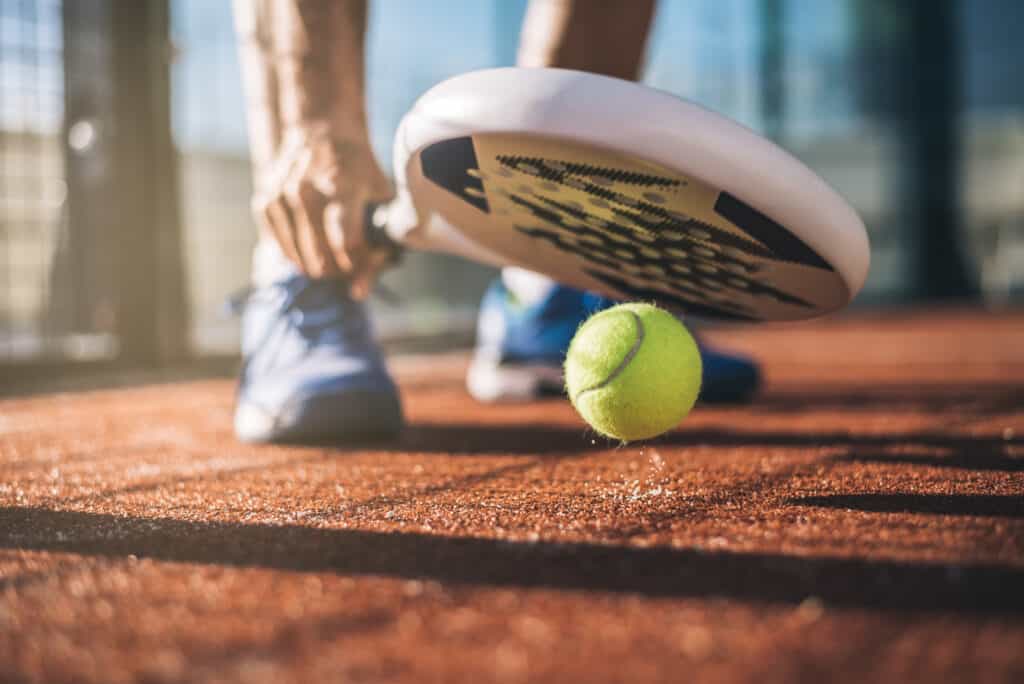
Padel balls are purpose-built for this game. They’re slightly smaller and have less pressure compared to tennis balls, making control a breeze. Constructed from rubber or similar materials, these balls impact speed, control, and bounce. Competitive play and higher standards call for special tournament balls. The market offers various Padel ball brands, and players often lean toward their favorites. The lifespan of these balls depends on factors like how intense the game is and the type of court you’re playing on.
Step by step: How Padel is played
Now, let’s dive into the core of the game: the actual gameplay. Padel demands speed, skill, and tactical thinking. The fundamental rules of Padel Tennis are easy to grasp and generally resemble those of tennis. However, there are nuances that set the game apart. The number of sets, points, and specific serving regulations contribute to the dynamic nature of matches. These game formats provide an ideal platform for both newcomers and seasoned players to relish the activity and enhance their skills.
In Padel, it’s predominantly a doubles game, meaning each team comprises two players. The aim? To send the ball over the net to the opposing side without letting it hit the ground. You and your partner endeavor to place the ball in a way that thwarts the opponent’s return. The game unfolds point by point, and the team that clinches two winning sets first takes the match. Winning a Padel match typically involves securing six games, with a lead of at least two games. Each game consists of four points, counted in this sequence: 15, 30, 40, and game. A match might consist of best-of-three sets or best-of-five sets, depending on the specific arrangements or tournament guidelines.
The serve – kicking off each Padel game
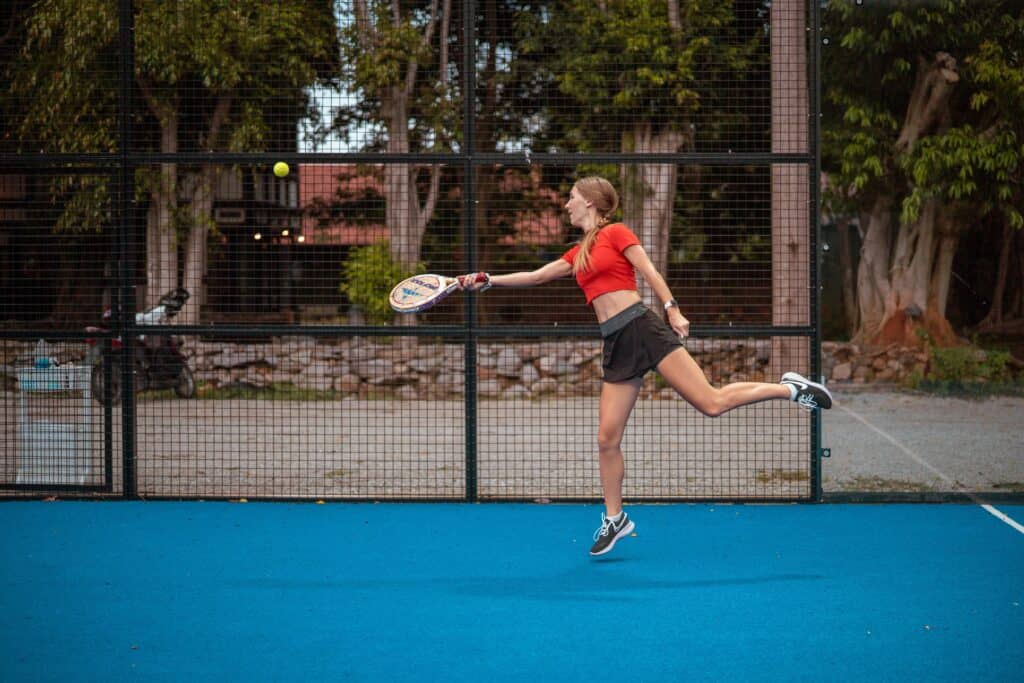
A pivotal moment in a Padel match, the serve initiates the action. One player starts the game by sending the ball over the net into the opponent’s court. The serve holds notable significance as it lays the foundation for engaging rallies and can greatly influence the overall game strategy. The objective is to place the ball strategically, making it challenging for the opponent to return.
Why Padel is so popular
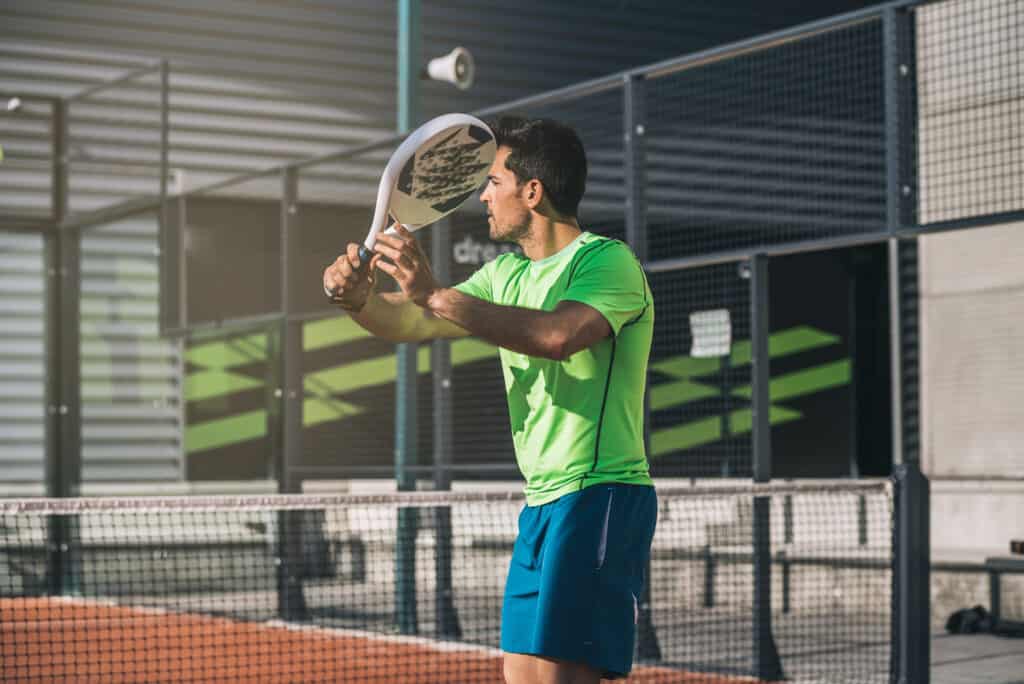
Ease of learning: One of the main draws of Padel is its relatively gentle learning curve. Thanks to its similarities with tennis and squash, beginners can quickly achieve initial successes, enhancing the enjoyment and motivation.
Social element: Being a doubles game, Padel underscores the social aspect of the sport. It offers a fantastic opportunity to engage in physical activity and have a great time with friends or colleagues.
Low injury risk: The smaller court and surrounding glass walls translate to fewer sudden movements, which in turn leads to a lower risk of injuries compared to other racket sports. This makes Padel appealing to those concerned about potential injuries.
Inclusivity: Padel accommodates individuals of all ages and fitness levels. There’s no need for specific physical prerequisites to start playing, making it accessible to practically everyone.
Fun factor: Padel is simply a blast. The interplay of shots against the wall and the cage creates unique and thrilling game scenarios. The emphasis in Padel is always on enjoyment and fun.
Health benefits: Padel brings along various health perks. Playing in a group enhances conditioning, coordination, and endurance. It also fosters agility and reaction time, contributing positively to overall fitness.
Top places to play Padel: Courts and clubs in Germany
Padel Tennis has witnessed a surge in popularity in Germany in recent years. More and more courts and clubs are offering the chance to explore and engage in this exciting sport. Eager to experience the rising wave of Padel Tennis? Urban Sports Club offers a plethora of opportunities to practice on the court with fellow Padel enthusiasts.
In Berlin, you can explore options like PadelBerlin, or We are Padel Berlin with your membership. Cologne offers padelBOX Köln-Lövenich, padelBox Weiden or Racket Arena Rhein-Erft for you to unleash your skills. In Munich, Sport Insel Taufkirchen and Sporttraum-Indoorsportarena boast Padel courts. Hamburg doesn’t lag behind either – gather your sports buddies and enjoy a few rounds at Hanse Padel. In Düsseldorf, you can give Padel Megasport a try.
Padel Tennis is undoubtedly an exhilarating and accessible pursuit that appeals to both casual players and avid athletes. The amalgamation of enjoyment, social interaction, and physical engagement makes Padel a compelling choice for those seeking a novel and invigorating sport. So, grab three of your sports buddies, grab a few rackets and balls, and plunge into the world of Padel!



Comments